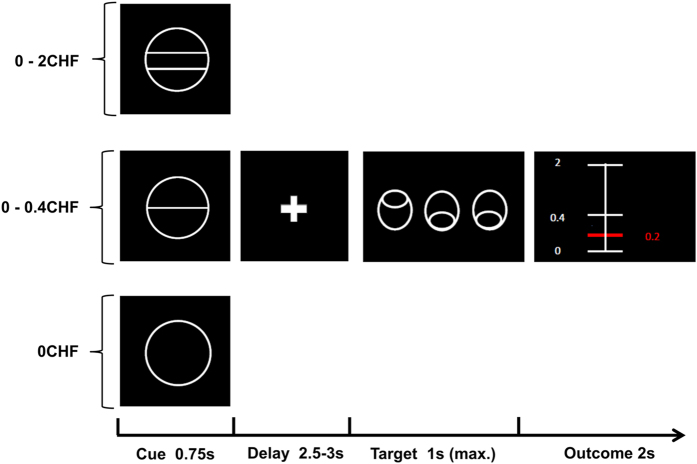Figure 4.
Task design of the adapted monetary incentive delay task. Adapted monetary incentive delay task: at the beginning of each trial, one of three different cues was presented for 0.75 s. The cue indicated the reward context, specifically the range of possible amounts participants could gain in that trial, i.e., 0–2 Swiss Francs (CHF; circle with two lines), CHF 0–0.40 (circle with one line), or CHF 0 (circle only; at time of testing CHF 1=USD 1.08). After a delay, varying from 2.5 to 3 s, the participants had to identify an outlier from three presented circles and press a button (either left or right) as fast as possible (varying from 0.32 to 1 s). In case of a correct answer, participants were immediately notified of the amount of money they had won, which directly depended on their individual task performance (duration of feedback 2 s). The gain of each trial was calculated based on the response times of the previous 15 individual trials. Error trials were defined as trials with a wrong response or late response (>1 s) and participants did not receive any monetary reward.

